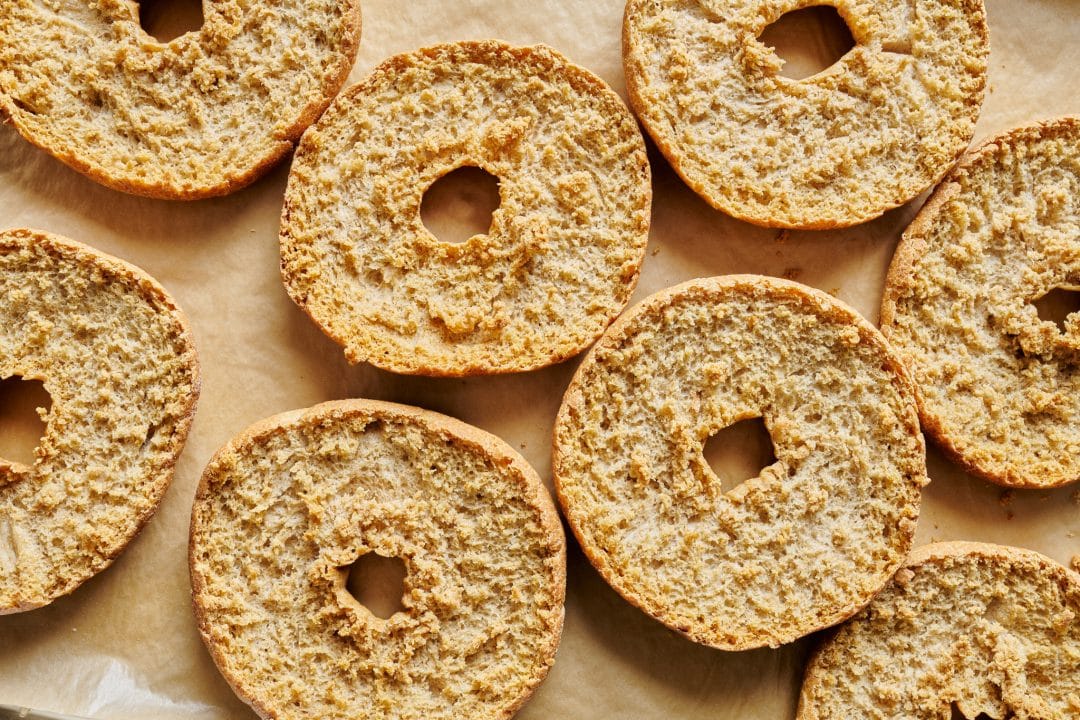To the uninitiated, the humble sourdough friselle (“free-ze-leh”)—a sort of Italian-style rusk—might look like a common bagel, split in half and toasted. But these crunchy rings embody the sentiment of the Mediterranean, a symbol of creativity in utilizing everyday ingredients to create lasting culinary staples.
When in Italy, I remember having them most often topped with a mixture of tomato, basil, herbs, salt, pepper, and a glug of olive oil—still my favorite way to eat them. Thanks to their extra-crisp texture that absorbs liquid without going too soggy, they really are the perfect bruschetta base. They can also be broken up and scattered over a fresh salad, not unlike panzanella or fattoush. Or you can take a sweeter path and top them with ricotta cheese and a drizzle of honey.
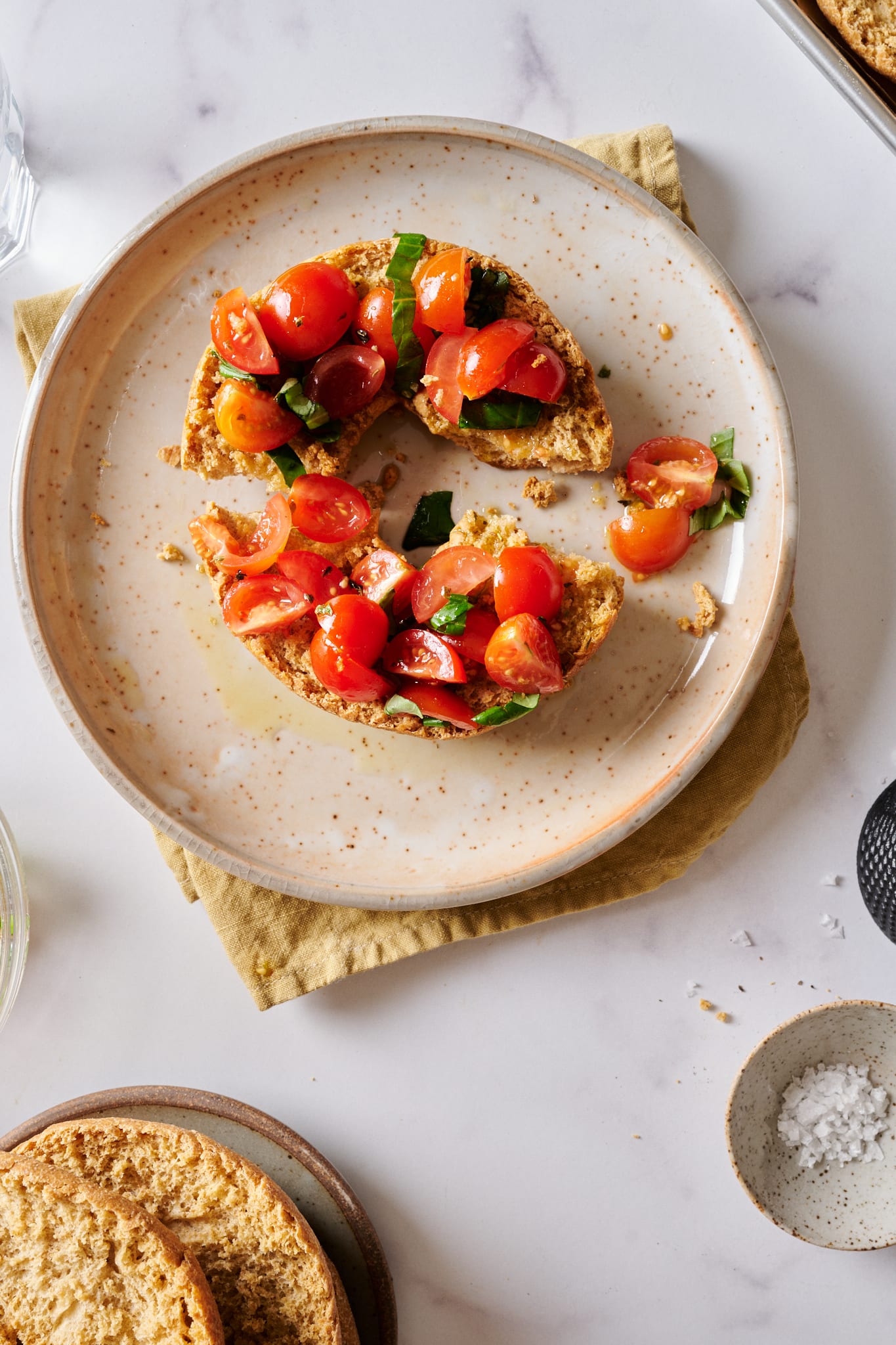
Sure, you can use any crunchy bread as a base for these delicious bites, but friselle are unique in that once baked, they last nearly indefinitely. This means you’ll always have a container of them in the pantry ready to go.
The opportunity to use friselle in your day-to-day cooking is as endless as the uses for a good piece of toast.
What’s more, these deeply golden rings have a texture not unlike stale bread, which makes a bite that’s simultaneously crunchy and yielding. Imagine capturing, in my opinion, the best part of your favorite loaf of sourdough bread—the crunchy crust—and making something entirely composed of that. That, in a nutshell, are friselle.
The opportunity to use friselle in your day-to-day cooking is as endless as the uses for a good piece of toast. Think of them as the perfect crunchy counterpoint to anything you might be preparing that’s soft and juicy. If you need a platform for sauteed peppers, an olive tapenade, or practically anything with olive oil—they’ve got you covered (or, should I say, they can be covered).
Read on for suggestions for putting these easy-to-make and easy-to-enjoy friselle to good use.
What Are Friselle?
Friselle are a traditional Italian bread that’s double-baked and typically shaped like a ring. Like a rusk, double-baking results in bread with an exceptional shelf life. They are very crispy and hard, meant to be softened with water, olive oil, or another liquid before topping with vegetables, cheeses, or meat.
Friselle are common in Southern Italy, but you’ll also find them throughout the country. Traditionally, they’re shaped as a ring, baked until just golden, then split in half and baked again with the crumb-side facing up.
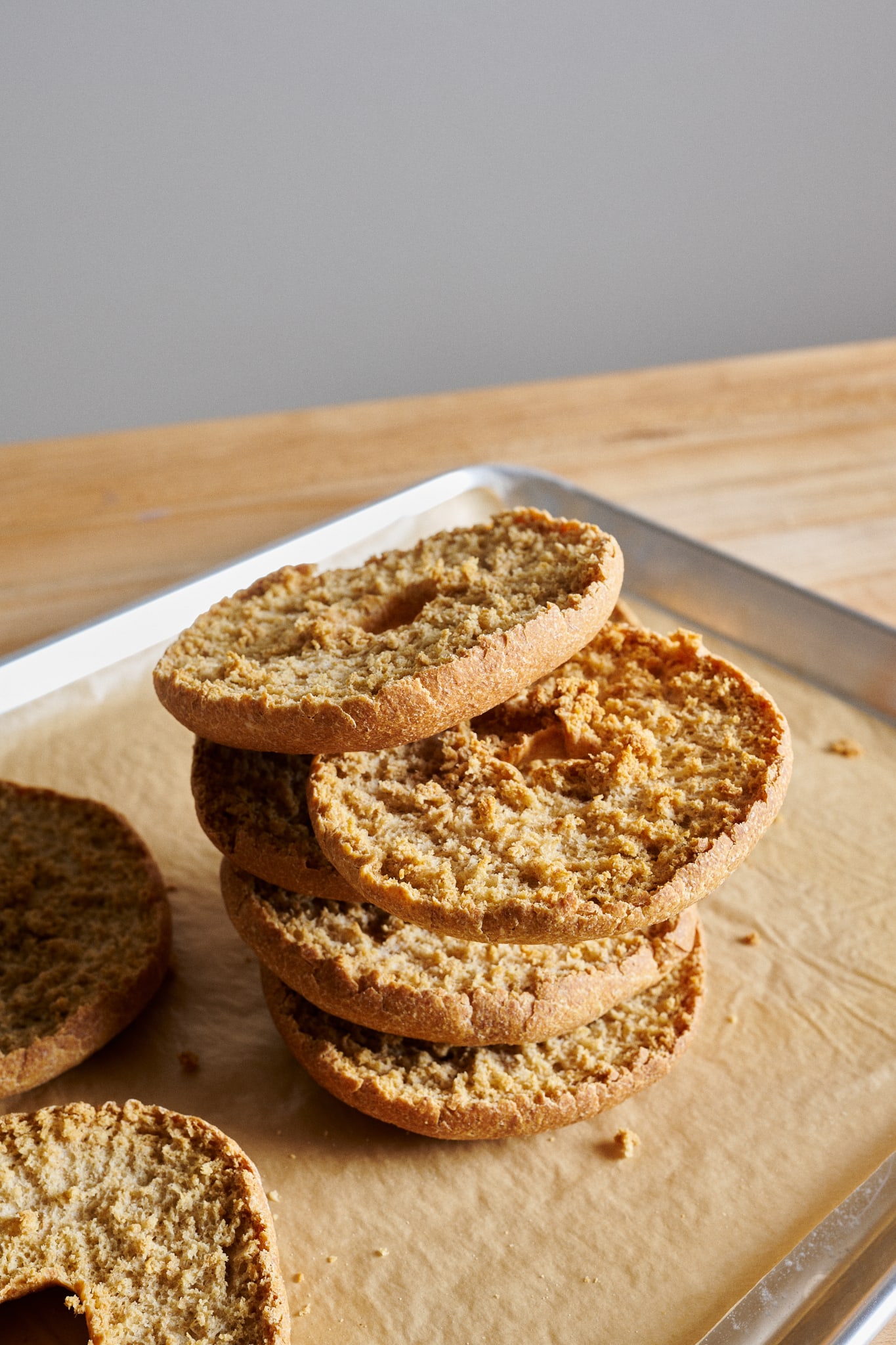
What Can You Eat With Friselle?
While it’s possible to eat them plain as a crunchy cracker, friselle are best when softened with liquid, usually water, before topping with olive oil or other dressing.
Here are a few of my favorite ways to eat friselle.
- Top with tomato, basil, olive oil, salt and pepper
- Top with sauteed bell peppers, olive oil, vinegar, salt and pepper (peperonata)
- Top with ricotta cheese with a drizzle of honey
- Top with burrata cheese (or mozzarella) with tomatoes and basil
- Break up the friselle into small chunks and use them to top a salad or soup (similar to croutons)
Flour Selection
Friselle are hearty and rustic, and to complement this direction, I like to make them with a large portion of whole wheat flour, like Cairnspring Whole Grain Expresso. While it would be great to make sourdough friselle with 100% whole wheat, in testing, I loved the combination of whole wheat and durum.
Why Use Durum Flour?
Durum flour is commonly used in pasta-making or pizza, as well as bread (like Pane Siciliano, which is 100% durum flour). It brings a beautiful golden color to a loaf, but, more importantly, I love its textural contributions. Adding 50% durum flour to this recipe results in sourdough friselle with a high level of crunch and crispness, more so than when only whole wheat flour is used.
Read more about what durum flour is and how to use it in your baking in my guide to using durum.
Why Use Malt in These Sourdough Friselle?
Diastatic malt powder is optional for this recipe, but I add it to help add color to the exterior of the friselle when they are baking. Additionally, it brings a very subtle sweetness to the flavor profile.
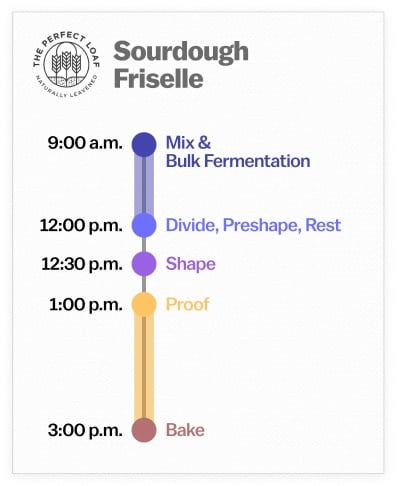
Baking Schedule
I love making these friselle because they are very easy to mix and ferment all in a single day. This means you can mix the dough in the morning using your sourdough starter and have them ready for dinner that evening.
If you want to mix and shape them on day one, then bake them the next day, you can cover the sheet pans after shaping them into rings and place them into the refrigerator. The next day, take them out, uncover them, and let them finish rising on the counter until they pass the poke test. This will take about 1 to 2 hours.
Sourdough Friselle Recipe
For tips on calculating baker’s percentages or modifying this formula, including halving or doubling the recipe, see my post on baker’s percentages.
Vitals
| Total dough weight | 1,360 grams |
| Pre-fermented flour | 12.5% |
| Hydration | 65.0% |
| Yield | 16 friselle |
Total Formula
Desired dough temperature: 78°F (25°C) (see my post on the importance of dough temperature).
| Weight | Ingredient | Baker’s Percentage |
|---|---|---|
| 354g | Whole wheat flour (Cairnspring Expresso Whole Wheat) | 50.0% |
| 354g | Finely milled durum flour (Central Milling Organic Extra Fancy Durum Flour) | 50.0% |
| 2g | Diastatic malt powder (optional) | 0.3% |
| 460g | Water | 65.0% |
| 14g | Fine sea salt | 2.0% |
| 177g | Ripe sourdough starter, 100% hydration | 25.0% |
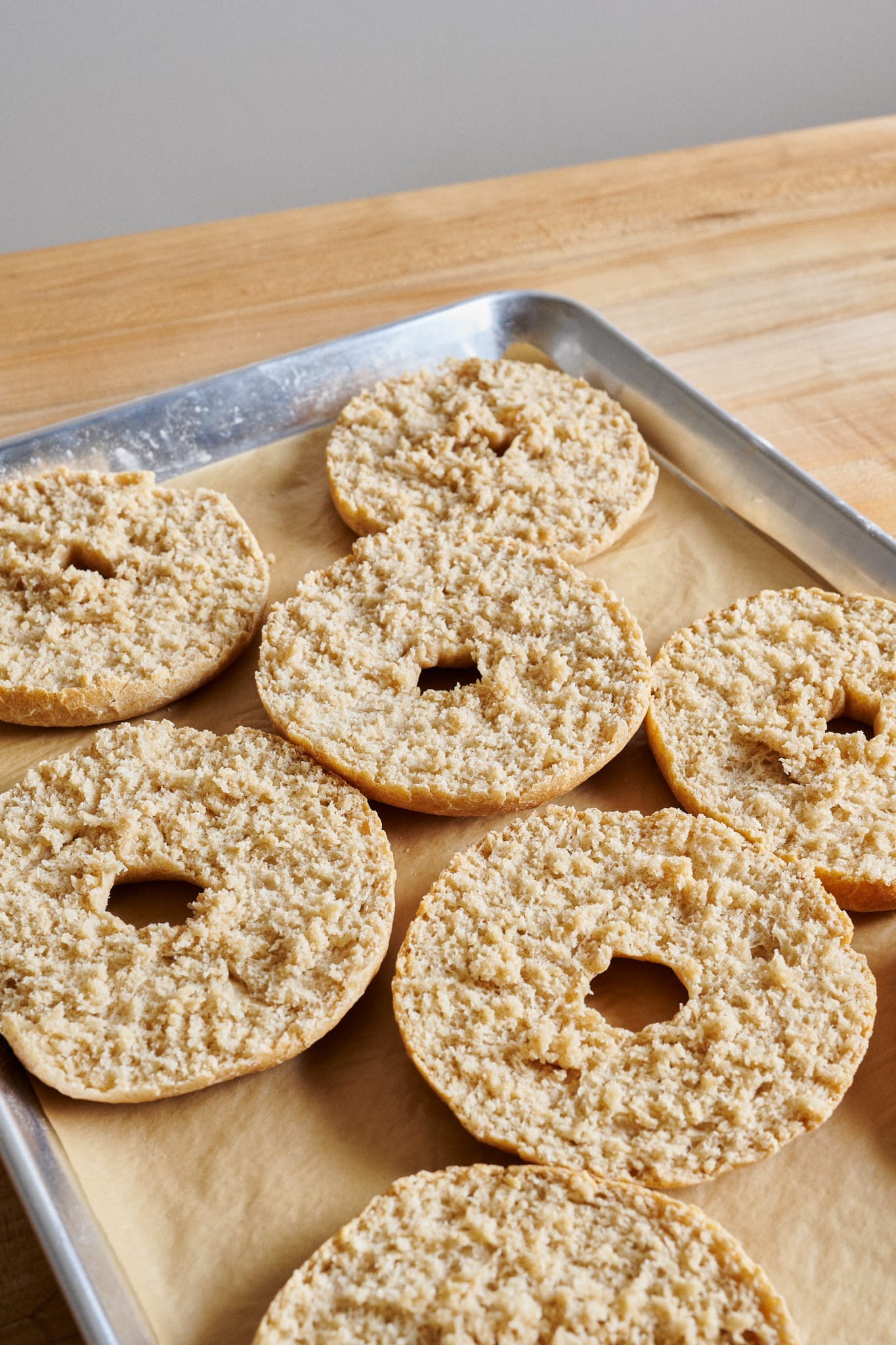
Sourdough Friselle Method
1. Mix – 9:00 a.m.
Place the water, flour, sourdough starter, salt, and optional malt in a large bowl. With wet hands, mix thoroughly until no dry bits remain. This is a rather dry and stiff dough. If the dough feels wet or very sticky, add a little flour; next time, hold back a little of the mixing water to better suit your flour.
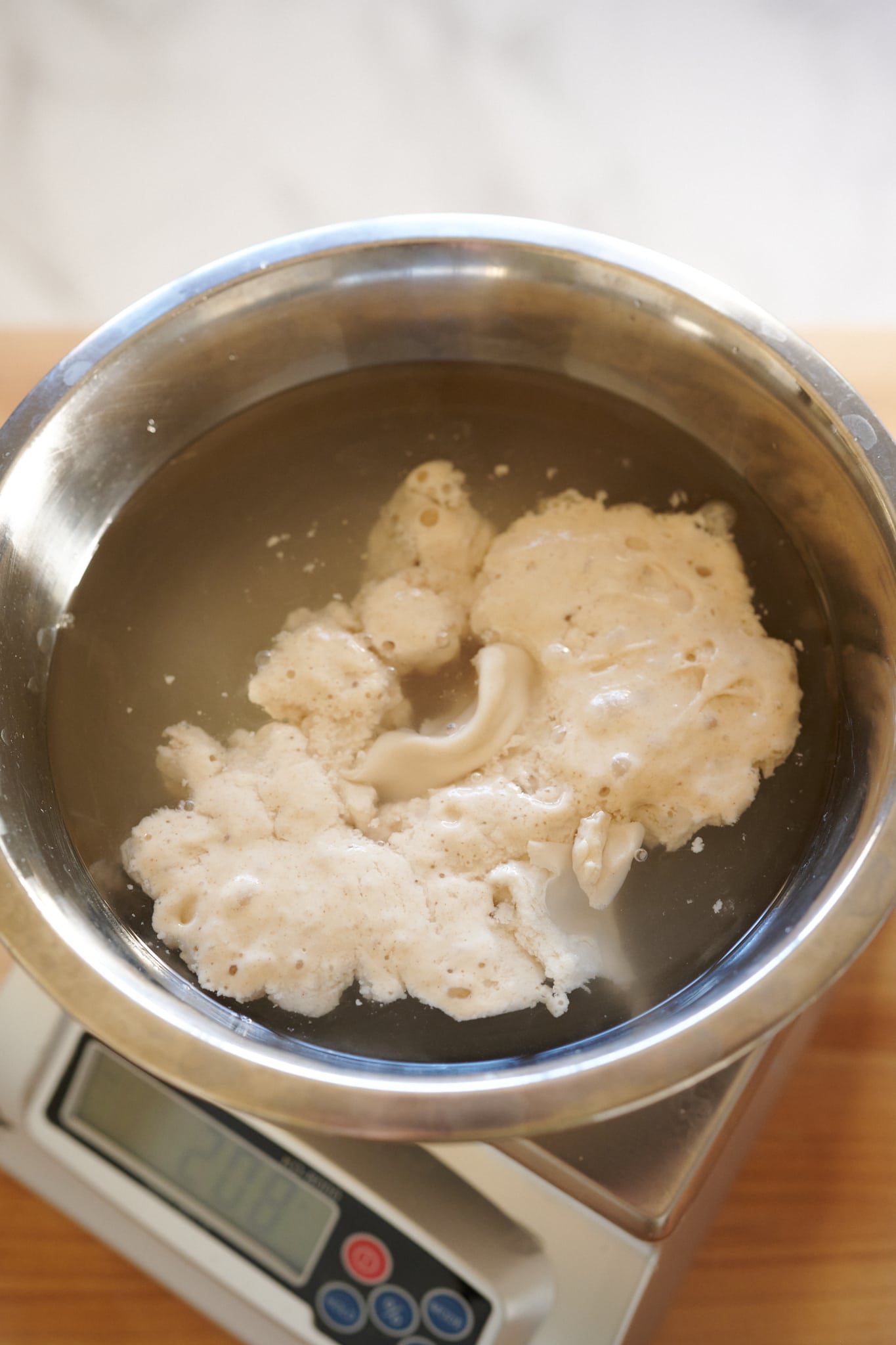
Next, strengthen the dough for a few minutes by grabbing the dough in the bowl with one hand, folding it over to the other side, rotating the bowl a bit, and repeating. For this dough, I kneaded for about 5 minutes until the dough smoothed and became elastic.
Tip the dough out to the counter and gather it up into a large ball. Then, place the dough, seam side down, into your lightly oiled (I used olive oil) bulk fermentation container (or keep it in the mixing bowl, gathered up into a ball with the seam side down in the middle) and cover.
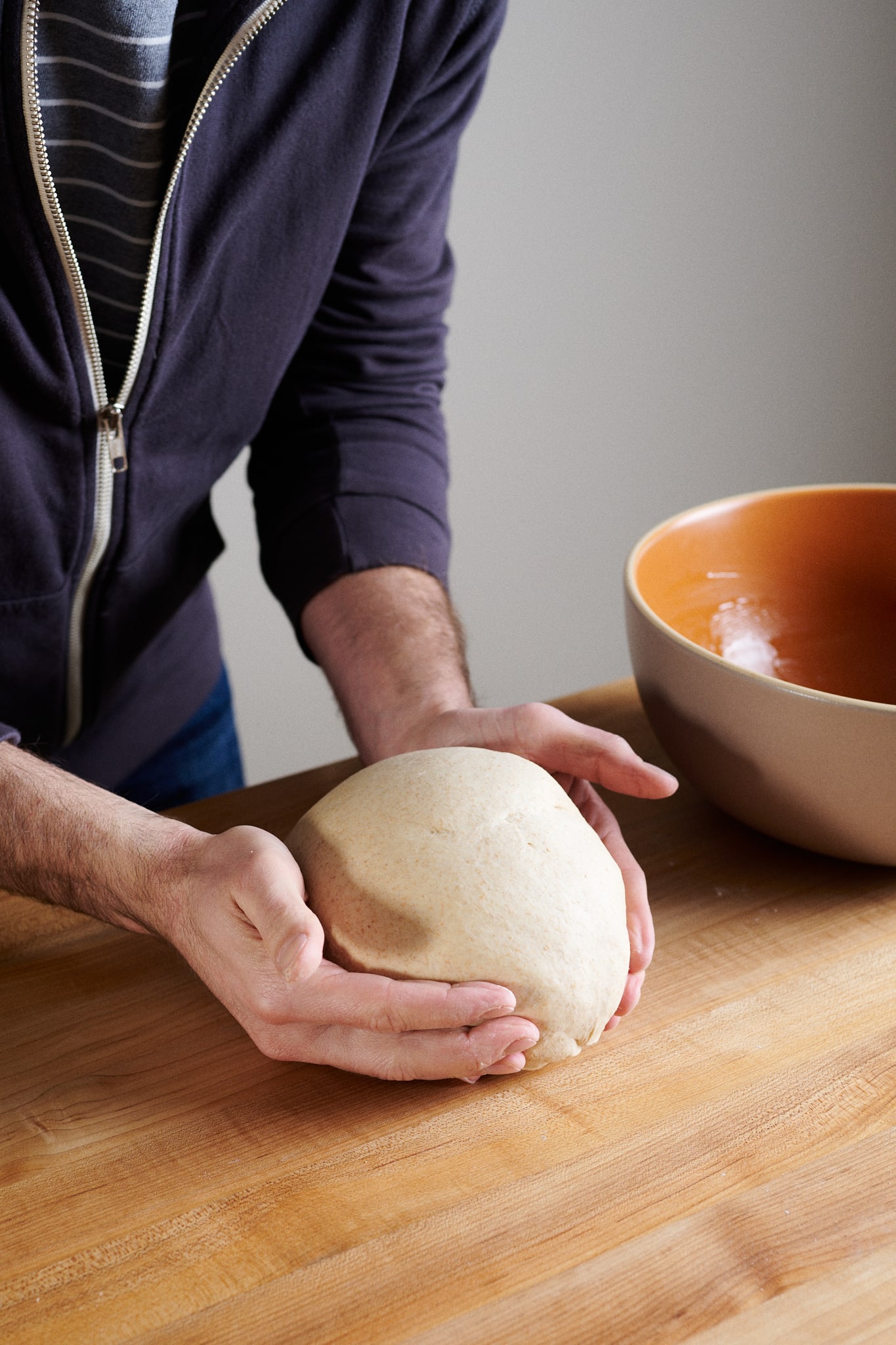
2. Bulk Fermentation – 9:30 a.m. to 12:00 p.m. (2 hours 30 minutes)
At a warm room temperature, 74-76°F (23-24°C), bulk fermentation should take about 2 hours and 30 minutes. Because this dough has lower hydration and is rather firm, it does not require any stretches and folds during bulk fermentation.
For more on this important step when making sourdough bread, see the guide to bulk fermentation.
3. Divide and Preshape – 12:00 p.m.
After 2 hours and 30 minutes, the dough should have risen a little (I’d estimate around 20% volume increase, depending on your flour), be slightly puffy to the touch, and be smoother on top.
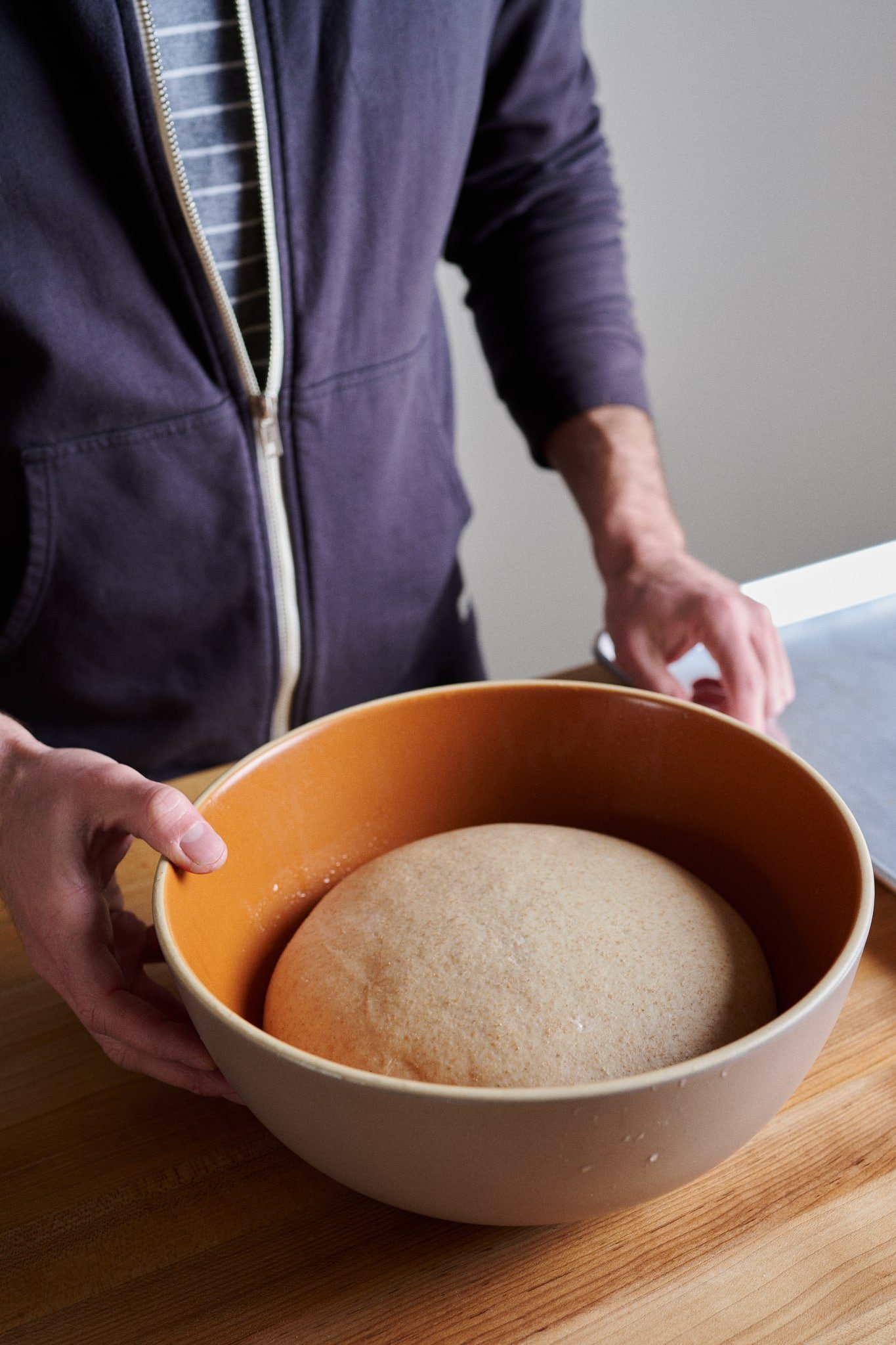
Line a half baking sheet with parchment paper.
Gently scrape the dough from the bulk fermentation container to a clean work surface. Using a bench knife, divide the dough into eight pieces, each weighing 165 grams. You might have a small bit of scrap dough left over.
Preshape a piece of dough into a tight ball, similar to preshaping pizza dough or dinner rolls. Ensure the ball has a smooth, uniform surface on top with the seam on the bottom. Transfer the preshaped ball to the prepared baking sheet. Repeat for each piece of dough.
You can see how I preshape these sourdough friselle in my pizza dough preshaping video below.
Cover the dough with a plastic cover (I love these reusable baking sheet covers that snap on) or a reusable plastic bag.
Let the dough rest, covered, for 30 minutes.
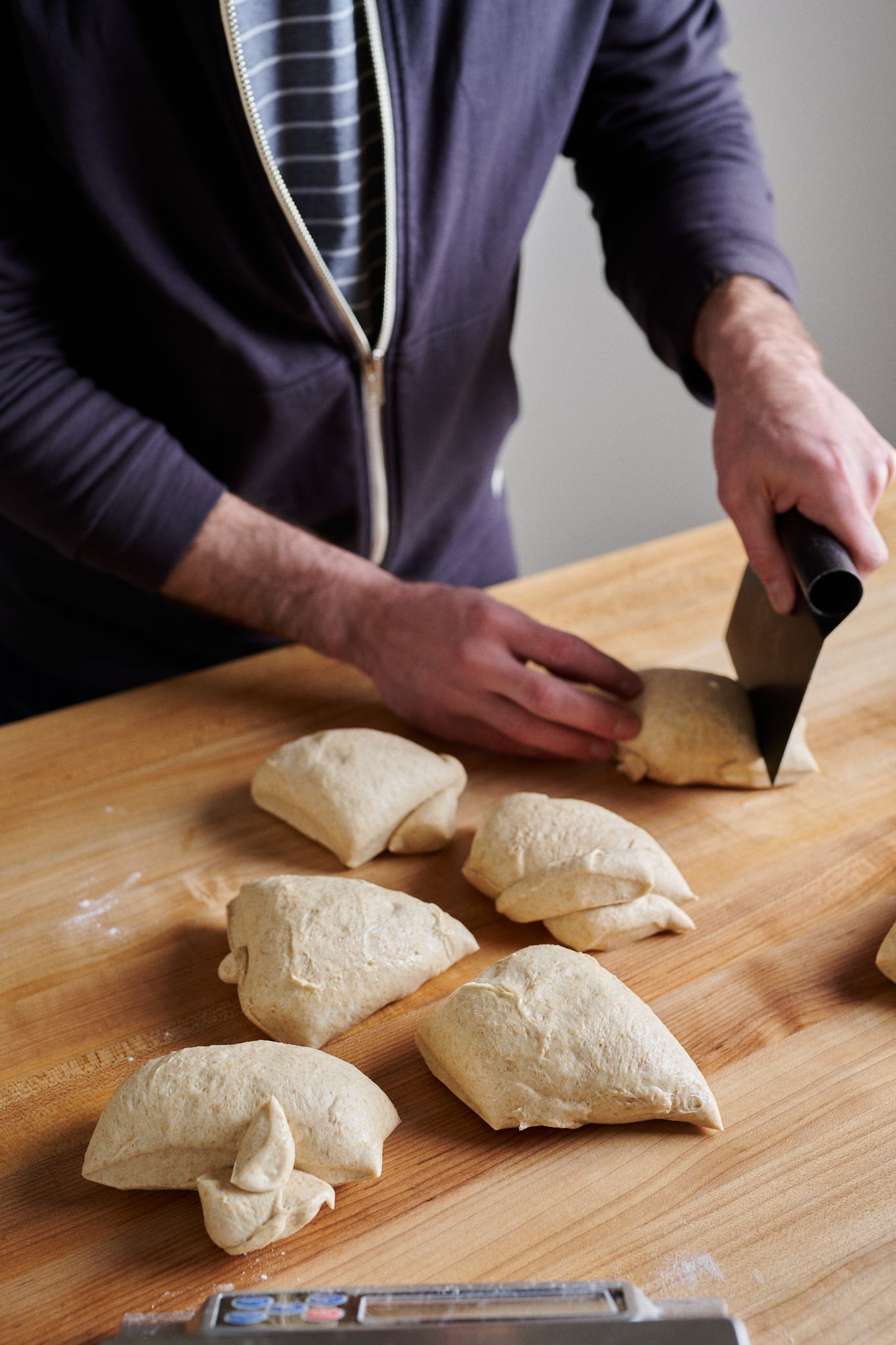
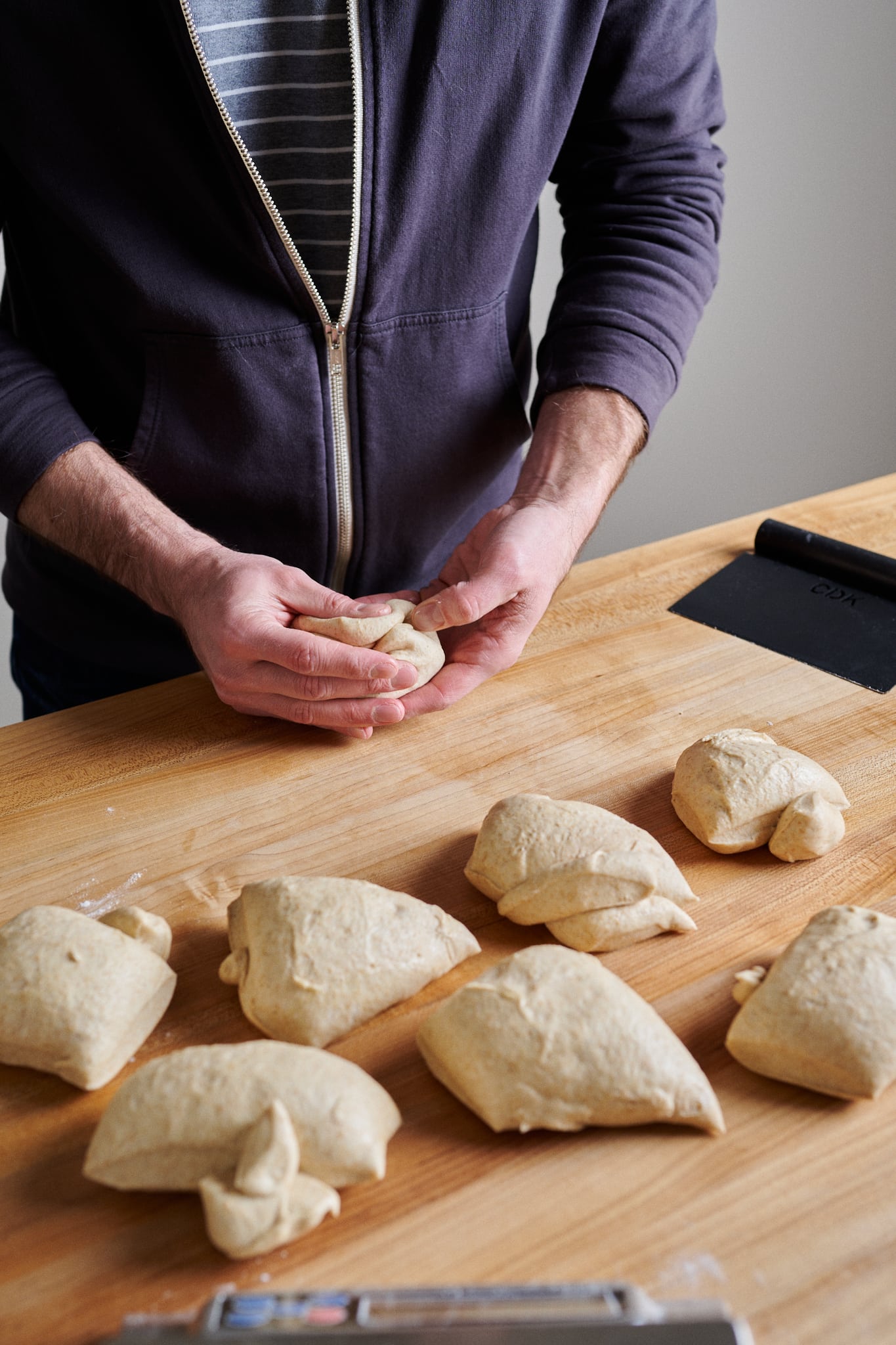
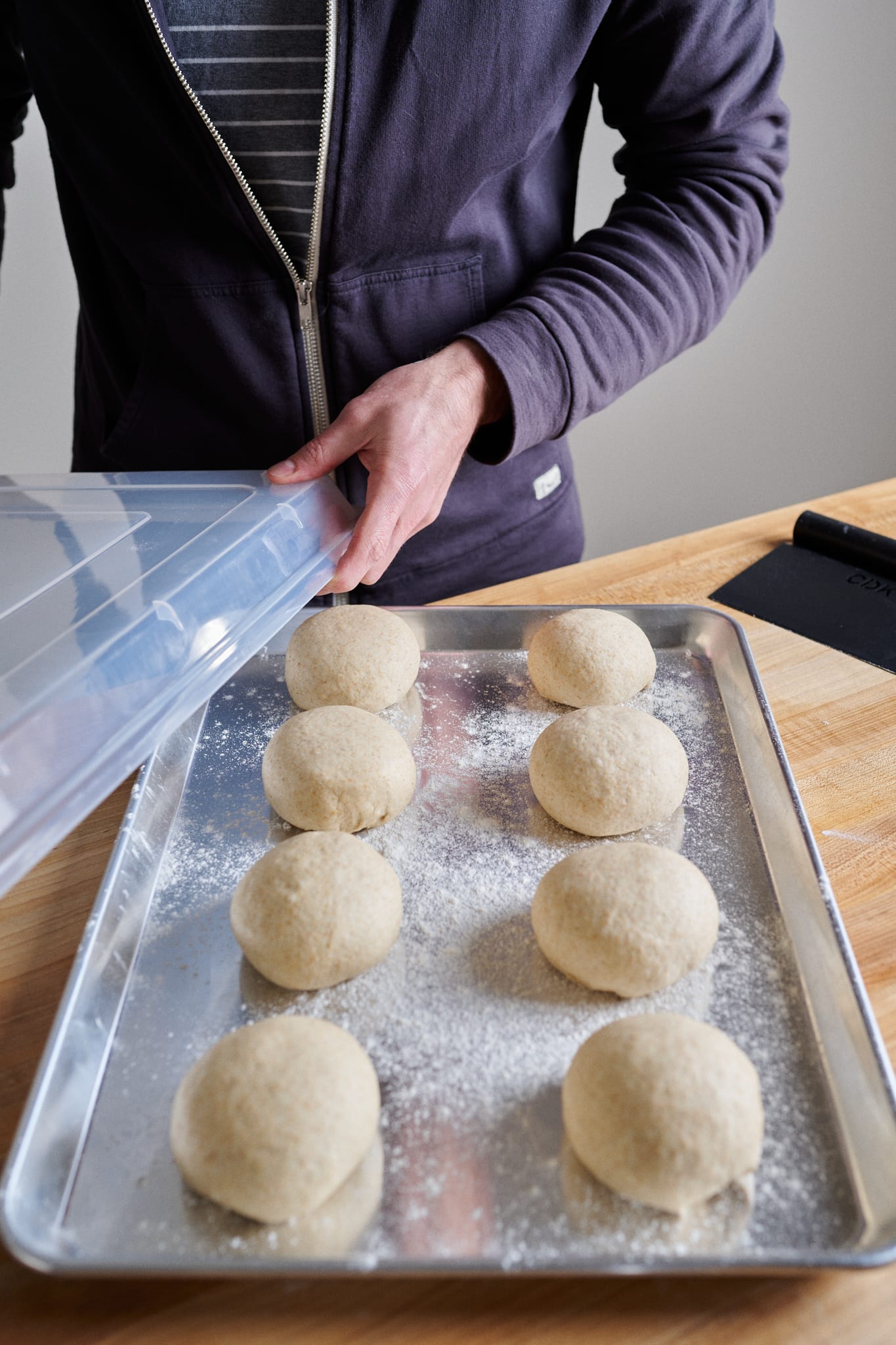
Note: I floured the baking sheet in the image above, but using parchment (as indicated in the recipe) is easier!
4. Shape – 12:30 p.m.
Gently transfer all of the preshaped balls to your work surface. Line another half baking sheet with parchment paper.
Working with the first ball of dough in front of you on your work surface, use your index and middle fingers to punch a hole in the center down to the work surface. Pick up the piece of dough and use your thumbs to push through the other side, making a hole in the middle. Stretch the dough out to exaggerate the hole. You want to ensure the hole is rather big; otherwise, it will close when the dough proofs and bakes.
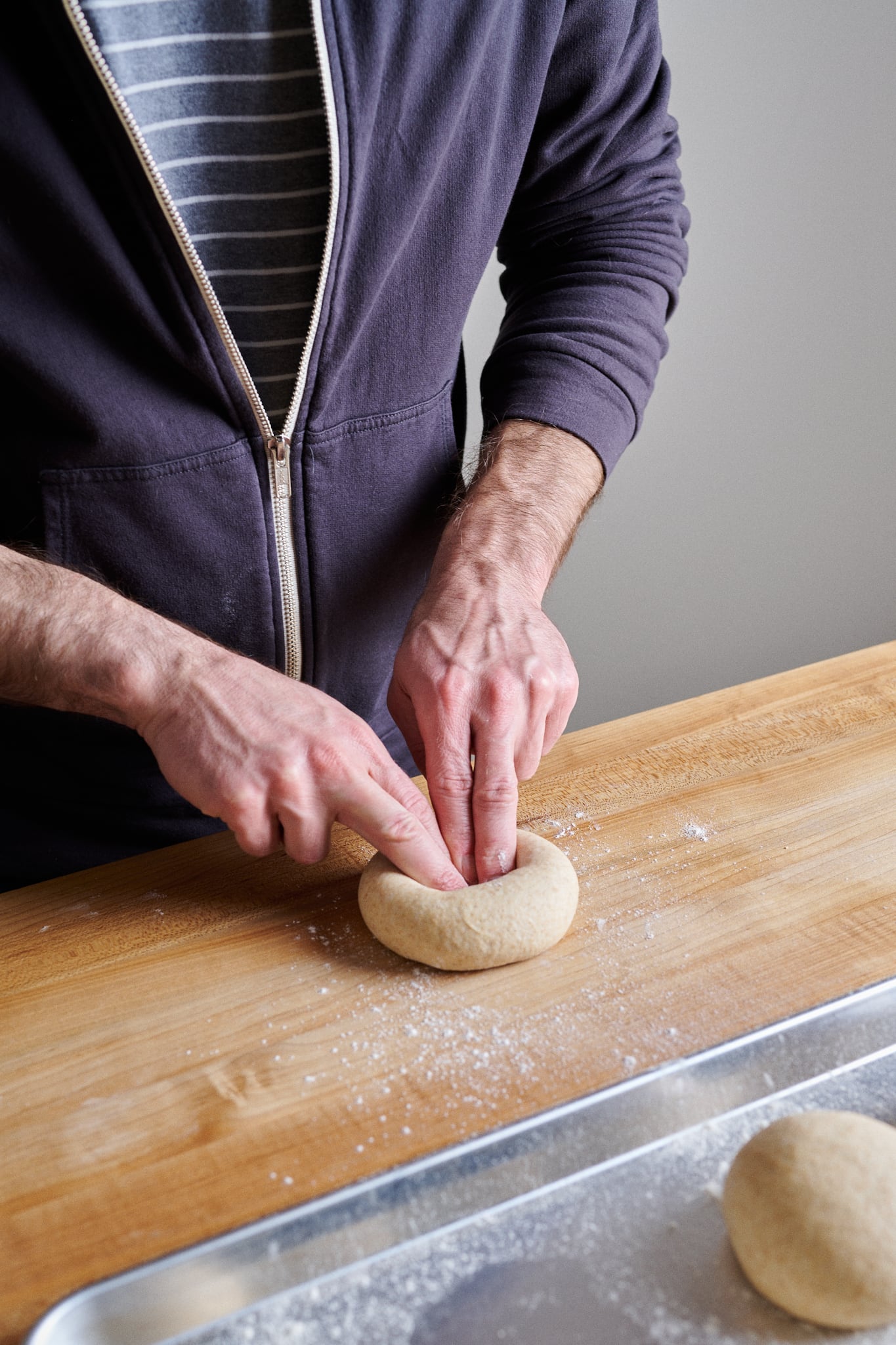
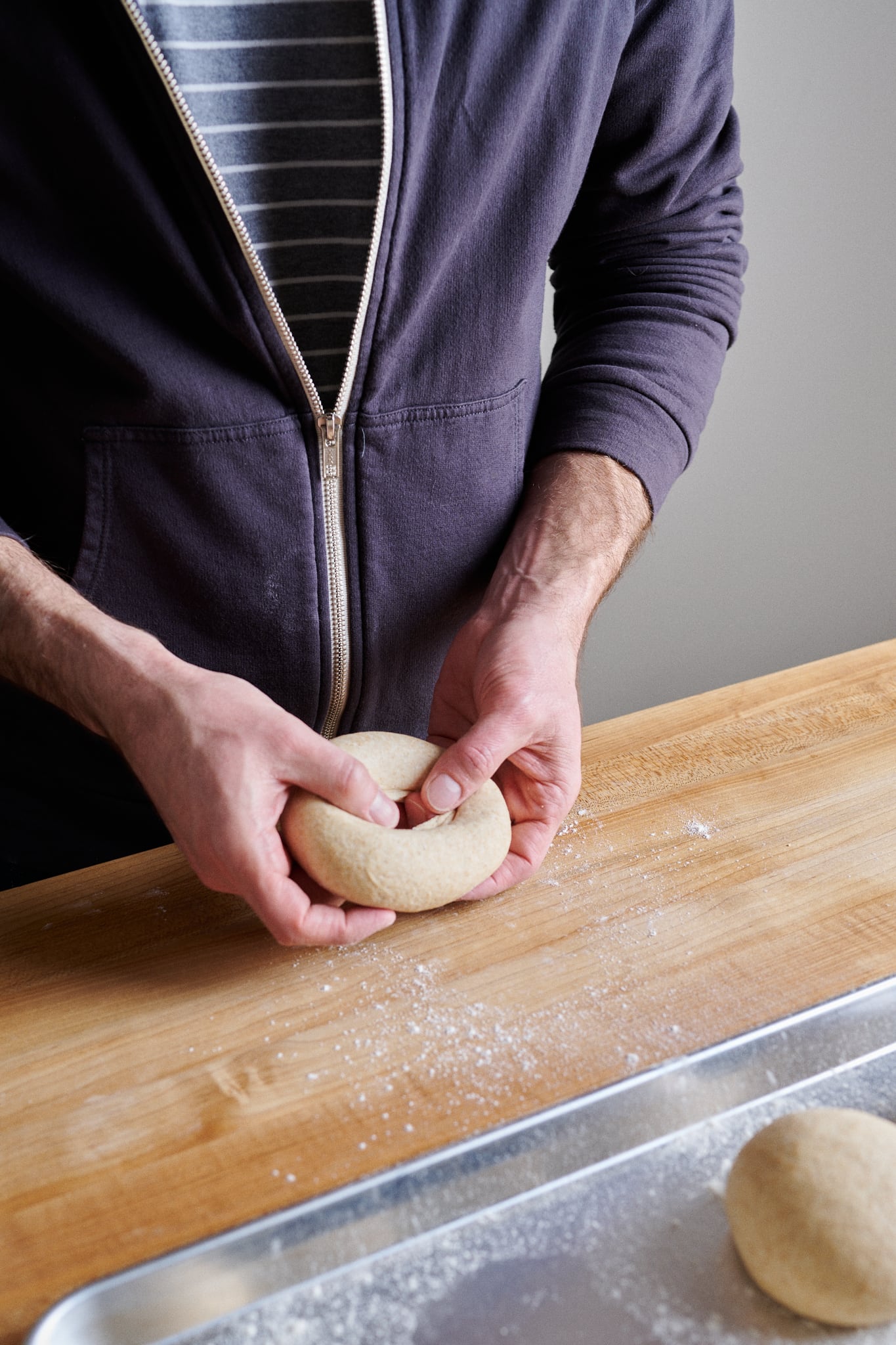
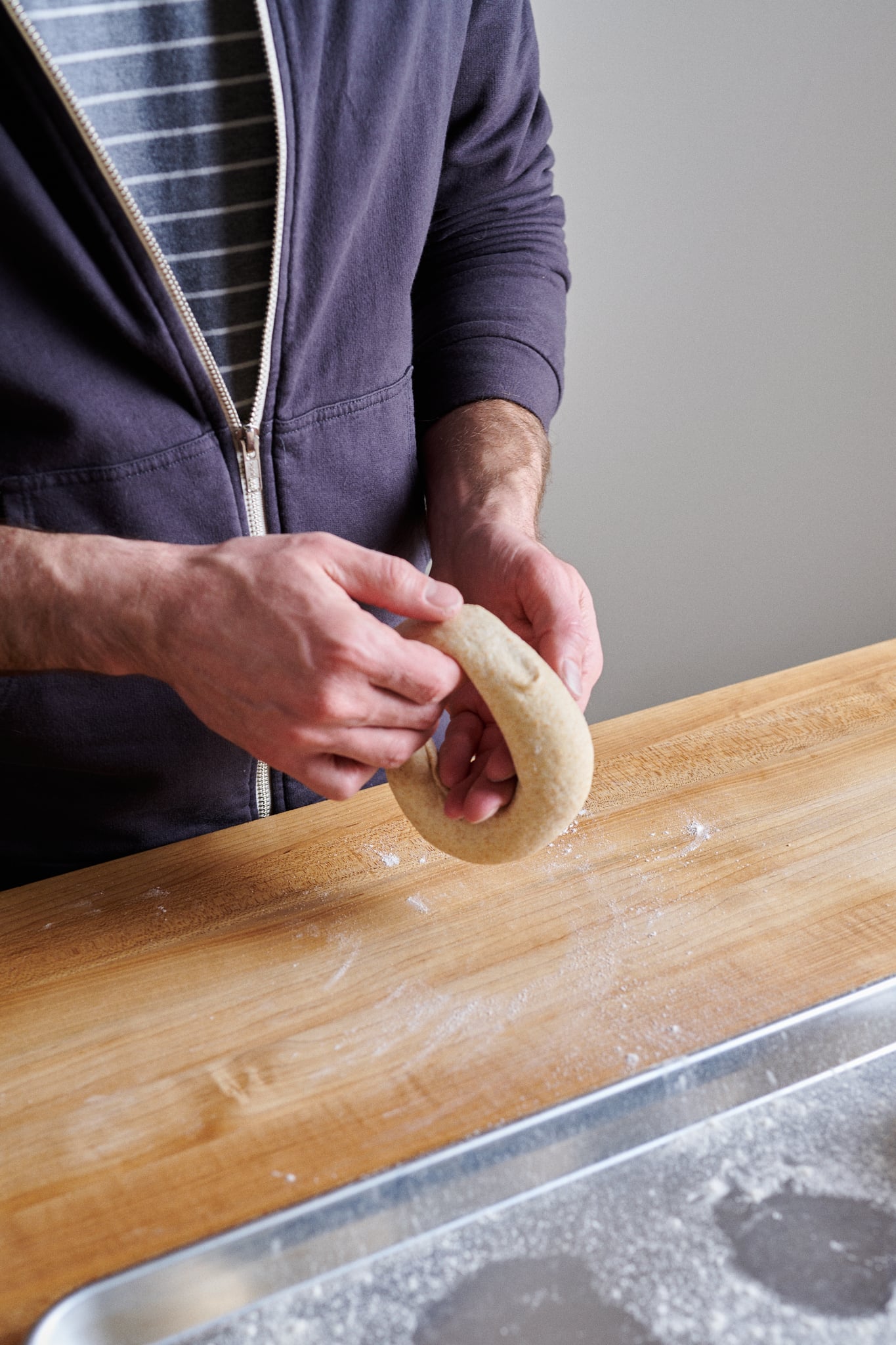
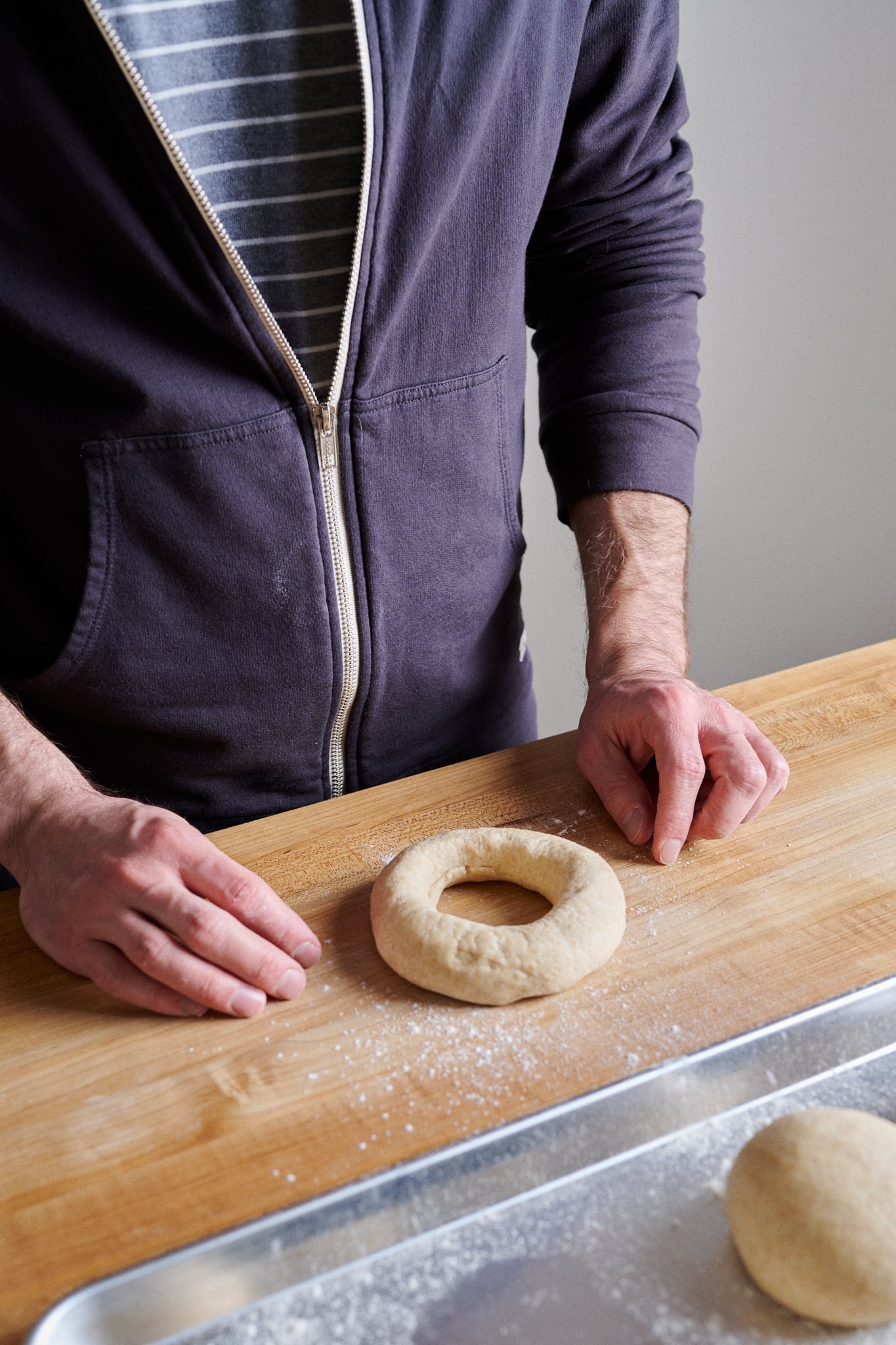
Note that it’s important the dough also is not spread so far that it becomes very thin. One hallmark of a good friselle is that they’re rather thick once baked. Why? If they are too thin, when soaked in liquid, they will become too soft and fall apart rather than stay crunchy.
Transfer the ring to one of the baking sheets and repeat with the remaining pieces of dough. You should have four rings on each baking sheet. Cover the baking sheets with plastic covers or reusable bags.
5. Proof – 1:00 p.m. to 3:00 p.m.
At room temperature, the friselle dough will need 2 to 3 hours to proof.
Overnight option: If you prefer to bake these the next day or many hours later, place the baking sheets into the fridge. When you want to bake them, take them out and let them proof on the counter for 1 to 2 hours until they pass the poke test.
6. Bake – 3:00 p.m.
The friselle are ready to bake when they have puffed up, and a gentle poke slowly, but not completely, springs back (also known as passing the poke test).
You do not have to steam your oven when baking sourdough friselle. Place one oven rack in the bottom of the oven and one in the top third, and preheat to 450°F (230°C).
Uncover the baking sheets and slide them into the oven. Bake for 15 minutes, rotating the pans from back to front and switching racks halfway through, until friselle are lightly browned on top and begin forming a crust (see image below). Remove the baking sheets from the oven, reduce the temperature to 325°F (160°C), and let the friselle cool for 5 minutes.
Using a fork, insert the tines into each friselle all around to split it, then gently pry it open (in the same way you would open an English muffin). Using a fork—as opposed to a clean-cutting knife—ensures the interior is rough, which is traditional.
Place each half, open side up, back on the baking sheet. Repeat with the remaining pieces of dough.
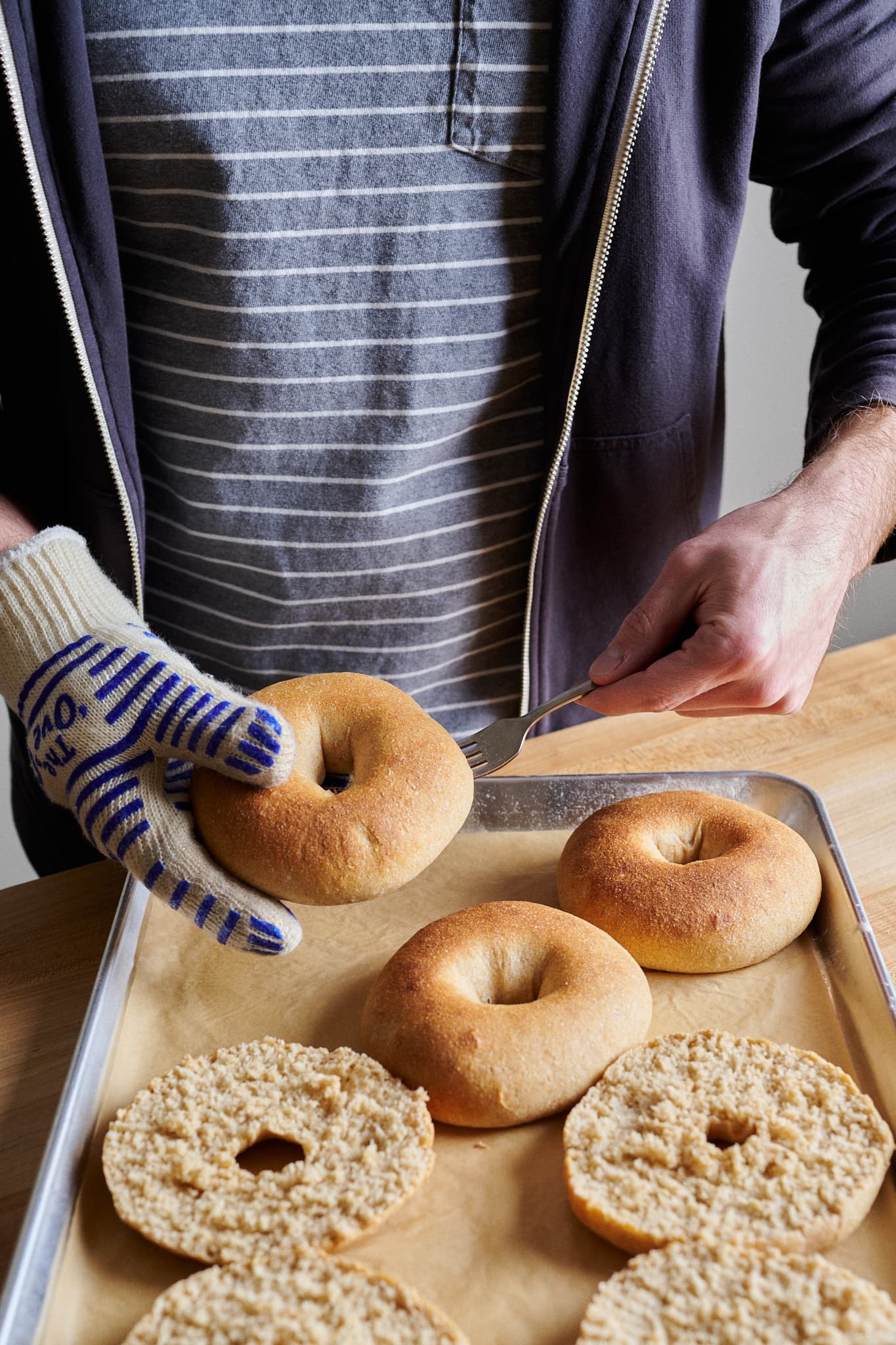
Return the baking sheets to the oven and bake for 45 to 60 minutes. The friselle are done when the exterior edge and inner circle are colored a deep brown and have no give when poked.
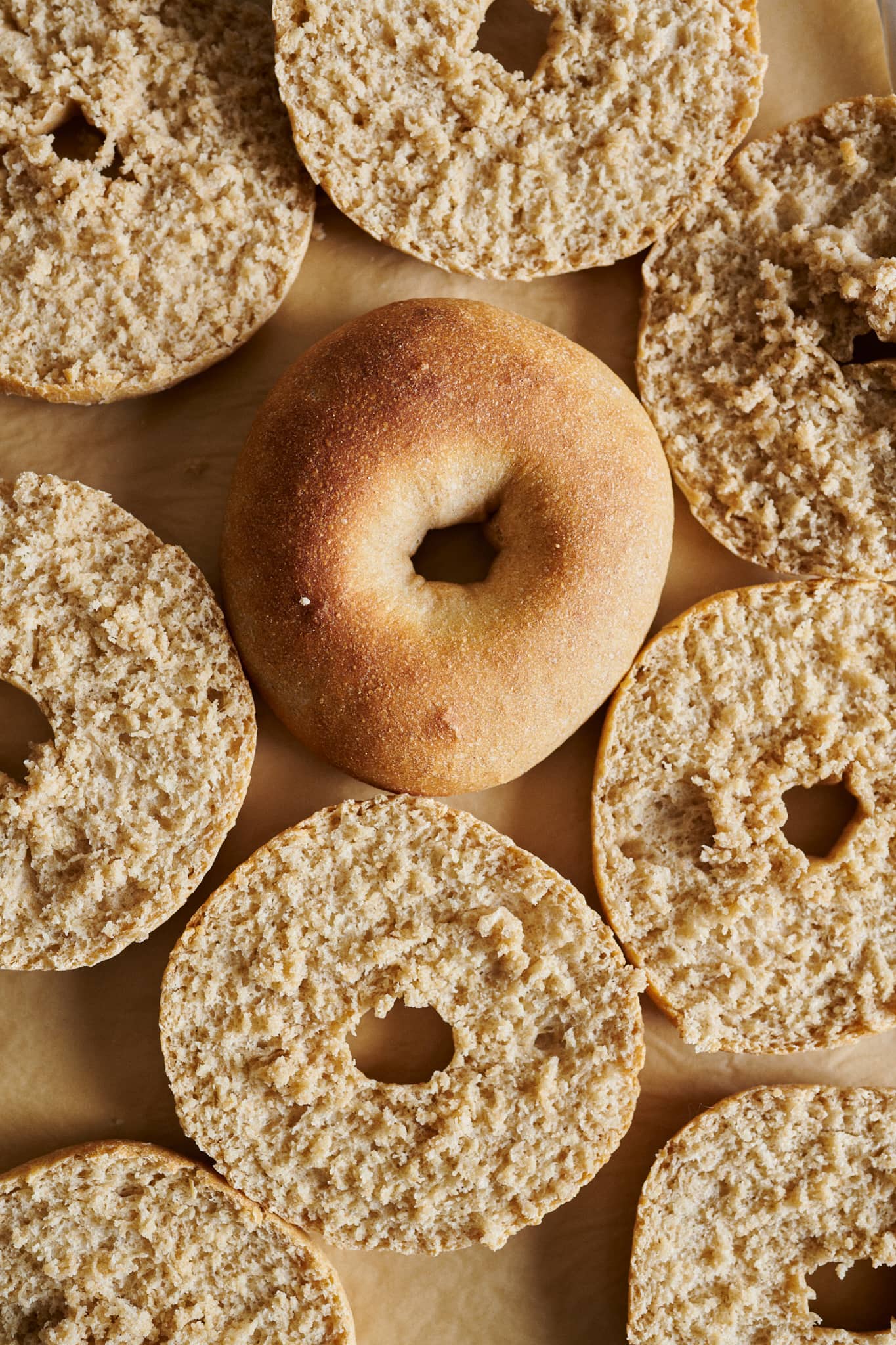
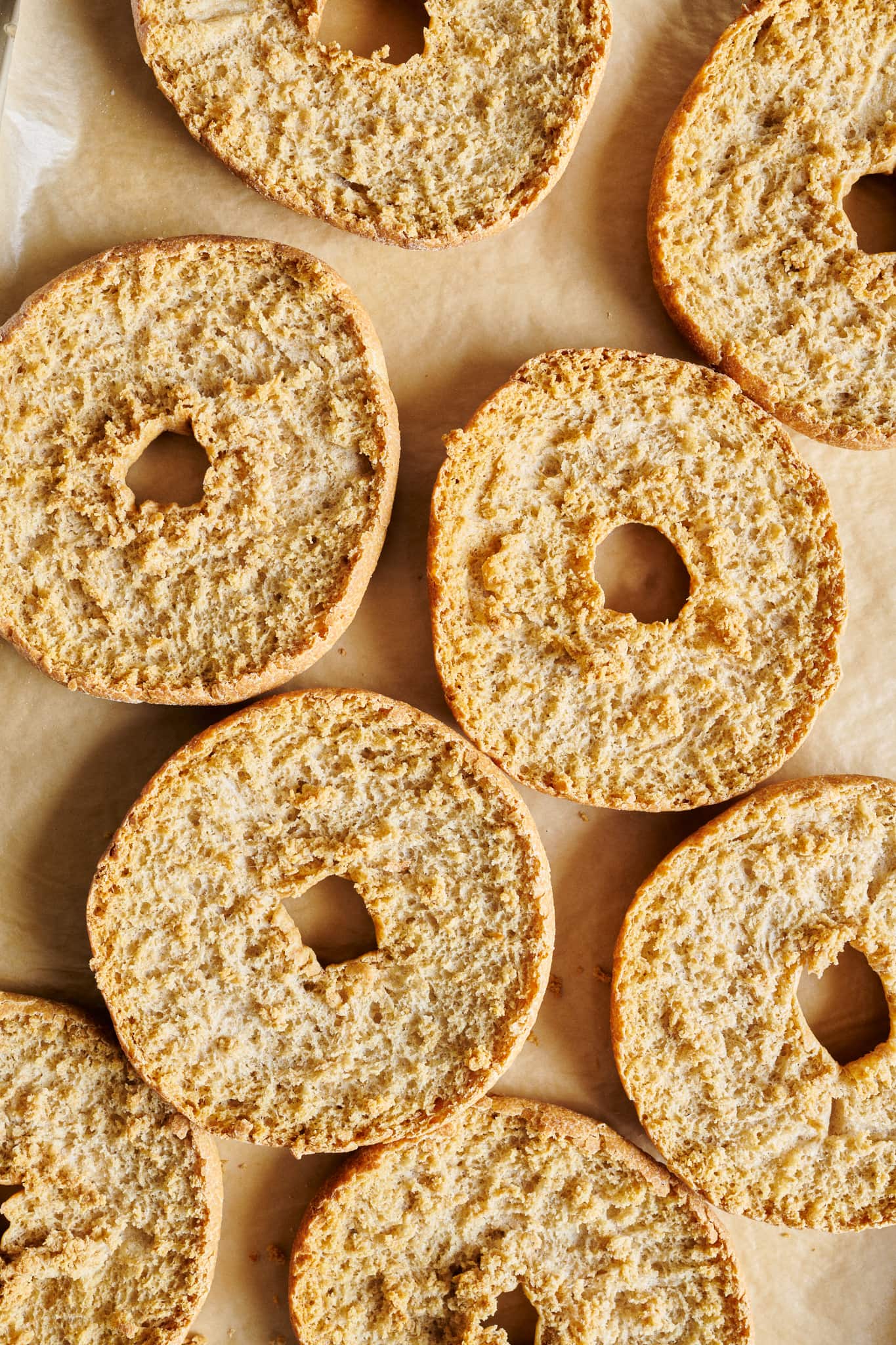
Remove from the oven and let cool completely. Store these sourdough friselle stacked in a dry, sealed container. They will keep indefinitely if kept dry.
Print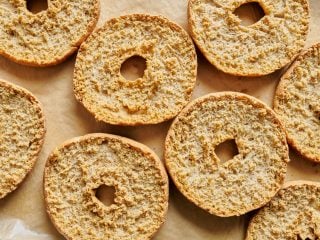
Sourdough Friselle (Italian Rusk)
- Author: Maurizio Leo
- Prep Time: 6 hours
- Cook Time: 1 hour 20 minutes
- Total Time: 7 hours 20 minutes
- Yield: 16 friselle
- Category: Breakfast, Lunch, Dinner, Snack
- Cuisine: Italian
Description
Friselle are a traditional Italian bread that’s double-baked and typically shaped like a ring. Like a rusk, double-baking results in bread with an exceptional shelf life. They are very crispy and hard, meant to be softened with water, olive oil, or another liquid before topping with vegetables, cheeses, or meat.
Be sure to quickly soak them in water before using them to eat, which helps soften them in preparation for any toppings.
Ingredients
- 354g whole wheat flour
- 354g finely milled durum flour
- 2g diastatic malt powder (optional)
- 460g water
- 14g fine sea salt
- 177g ripe sourdough starter, 100% hydration
Instructions
- Mix – 9:00 a.m.
Place the water, flour, sourdough starter, salt, and optional malt in a large bowl. With wet hands, mix thoroughly until no dry bits remain. Next, strengthen the dough for a few minutes by grabbing the dough in the bowl with one hand, folding it over to the other side, rotating the bowl a bit, and repeating. For this dough, I kneaded for about 5 minutes until the dough smoothed and became elastic. - Bulk Fermentation – 9:30 a.m. to 12:00 p.m. (2 hours 30 minutes)
At a warm room temperature, 74-76°F (23-24°C), bulk fermentation should take about 2 hours and 30 minutes. Because this dough has lower hydration and is rather firm, it does not require any stretches and folds during bulk fermentation. - Divide and Preshape – 12:00 p.m.
Line a half baking sheet with parchment paper. Gently scrape the dough from the bulk fermentation container to a clean work surface. Divide the dough into eight 165g pieces. Preshape a piece of dough into a tight ball, similar to preshaping pizza dough or dinner rolls. Ensure the ball has a smooth, uniform surface on top with the seam on the bottom. Transfer the preshaped ball to the prepared baking sheet. Repeat for each piece of dough. Cover and let rest 30 minutes. - Shape – 12:30 p.m.
Gently transfer all of the preshaped balls to your work surface. Line another half baking sheet with parchment paper. Working with the first ball of dough in front of you on your work surface, use your index and middle fingers to punch a hole in the center down to the work surface. Pick up the piece of dough and use your thumbs to push through the other side, making a hole in the middle. Stretch the dough out to exaggerate the hole. Transfer the ring to one of the baking sheets and repeat with the remaining pieces of dough. You should have four rings on each baking sheet. Cover the baking sheets with plastic covers or reusable bags. - Proof – 1:00 p.m. to 3:00 p.m.
At room temperature, the friselle dough will need 2 to 3 hours to proof. - Bake – 3:00 p.m.
The dough is ready when it’s puffed up, and a gentle poke slowly, but not completely, springs back. Place one oven rack in the bottom of the oven and one in the top third, and preheat to 450°F (230°C). Uncover the baking sheets and slide them into the oven. Bake for 15 minutes, rotating the pans from back to front and switching racks halfway through, until friselle are lightly browned on top and begin forming a crust (see image below). Remove the baking sheets from the oven, reduce the temperature to 325°F (160°C), and let the friselle cool for 5 minutes. Using a fork, insert the tines into each friselle all around to split it, then gently pry it open. Place each half, open side up, back on the baking sheet. Repeat with the remaining pieces of dough. Return the baking sheets to the oven and bake for 45 to 60 minutes. The friselle are done when the exterior edge and inner circle are colored a deep brown and have no give when poked.
Notes
If you don’t have durum flour, substitute it for more whole wheat flour.
If you prefer to bake these the next day or many hours later, place the baking sheets into the fridge after the dough is shaped into rings. When you want to bake them, take them out and let them proof on the counter for 1 to 2 hours until they pass the poke test.
Sourdough Friselle FAQs
What are friselle integrale?
Friselle integrale are made with 100% whole wheat flour (“integrale” means whole wheat in Italian). If you want to make friselle integrale, change the flour in this recipe to be entirely comprised of whole wheat flour (or use whole durum!).
Why are friselle double-baked?
Double-baking friselle ensures all the water is baked out of the dough and results in bread that can be stored indefinitely without the risk of spoilage.
What’s Next?
If you’re looking for more Italian-inspired breads, and you have extra durum flour on hand, be sure to check out my Pane Siciliano (durum bread with sesame seeds).
Or, my Italian-style baguette, the green olive filoncini (that are twisted instead of rolled!).
Buon appetito!


